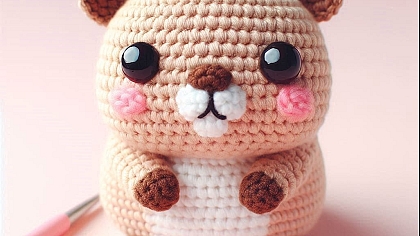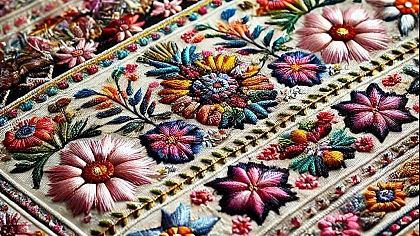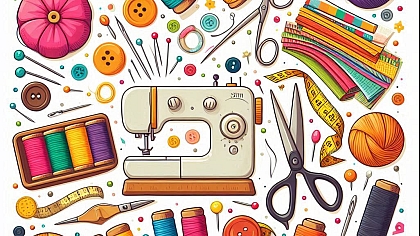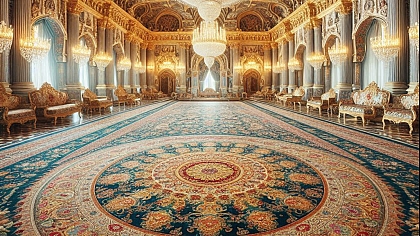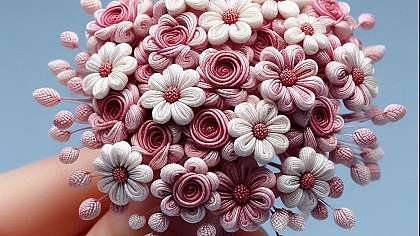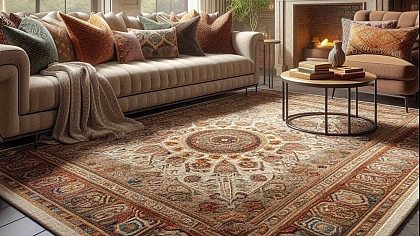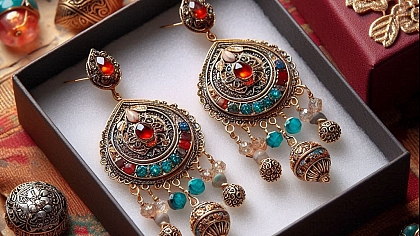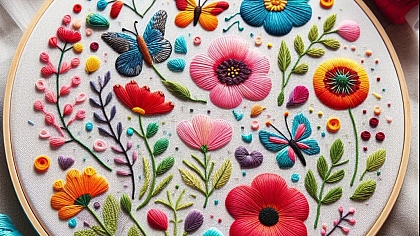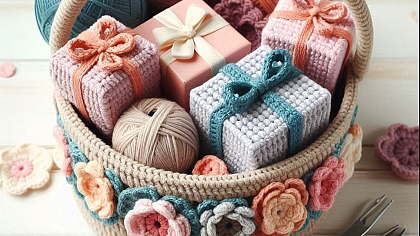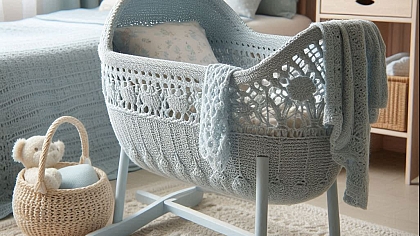
Creative Weaving: Pushing the Boundaries of Traditional Techniques
Weaving, an ancient craft that dates back to the Neolithic period, has always been a cornerstone of human culture and civilization. From the creation of simple baskets and textiles to the development of complex fabrics and tapestries, weaving has evolved significantly over the millennia. However, the true essence of weaving lies in its ability to continuously reinvent itself, adapting to the changing times and tastes. Today, creative weavers are pushing the boundaries of traditional techniques, blending the old with the new to create innovative and inspiring works of art. This article delves into the world of creative weaving, exploring the techniques, materials, and inspirations that are redefining this timeless craft.
The Evolution of Weaving Techniques

Traditional weaving techniques, such as plain weave, twill, and satin, have been the foundation of textile production for centuries. These methods involve interlacing warp and weft threads in specific patterns to create different textures and designs. However, as weavers sought to express their creativity and individuality, they began to experiment with these age-old techniques, adding new dimensions and complexities to their work.
One of the significant advancements in modern weaving is the use of complex loom setups and computerized looms. These tools have enabled weavers to create intricate patterns and designs that were previously unimaginable. Jacquard looms, for example, allow for the creation of highly detailed and elaborate textiles by controlling individual warp threads. This level of precision and control has opened up new possibilities for creative expression in weaving.
Another innovative technique that has gained popularity is double weaving, where two layers of fabric are woven simultaneously. This method allows for the creation of reversible textiles with different patterns and colors on each side. Double weaving requires a high level of skill and planning, as the weaver must carefully manage the tension and interaction between the two layers. The result is a fabric that is not only visually stunning but also versatile and functional.
Exploring New Materials
Traditionally, weavers have used natural fibers such as cotton, wool, silk, and linen to create their textiles. While these materials remain popular for their beauty and durability, modern weavers are increasingly exploring new and unconventional materials to add texture, color, and dimension to their work.
One of the most exciting developments in contemporary weaving is the use of synthetic fibers and mixed media. Materials such as nylon, polyester, and metallic threads can be combined with natural fibers to create unique and innovative textiles. These synthetic materials offer new possibilities for texture and sheen, allowing weavers to experiment with light and shadow in their designs. Additionally, the durability and strength of synthetic fibers make them ideal for creating functional and wearable art.
Another trend in modern weaving is the incorporation of unconventional materials such as paper, plastic, and recycled objects. Weavers are using strips of paper to create lightweight and delicate fabrics with intricate patterns. Plastic bags and packaging materials are being repurposed into vibrant and colorful textiles, highlighting the potential for sustainability and environmental consciousness in the craft. By incorporating these unconventional materials, weavers are challenging the traditional notions of what constitutes a textile and pushing the boundaries of the craft.
Inspirations from Nature and Culture

Nature has always been a rich source of inspiration for weavers, providing a vast palette of colors, patterns, and textures. Contemporary weavers are taking this inspiration further by incorporating natural elements directly into their work. Plant fibers, seeds, and even small branches are being woven into textiles, creating pieces that are deeply connected to the natural world. These works often explore themes of growth, decay, and the cycles of nature, offering a tactile representation of the environment.
Cultural heritage is another significant influence in creative weaving. Many weavers draw on the rich traditions and techniques of their ancestors, reinterpreting them in a modern context. For example, the intricate patterns of traditional Navajo weaving or the bold colors of African kente cloth can be seen in contemporary textiles, reimagined with new materials and techniques. This blending of old and new creates a dialogue between past and present, honoring the history of the craft while pushing it forward.
Weavers also find inspiration in the world of art and design. The bold geometric patterns of modernist painters, the organic forms of sculpture, and the abstract compositions of contemporary art all provide fertile ground for creative exploration. By studying and incorporating these influences, weavers can expand their visual vocabulary and create textiles that are not only functional but also works of art in their own right.
Pushing the Boundaries with Technology
Technology has always played a role in the evolution of weaving, from the invention of the loom to the development of synthetic fibers. Today, digital technology is revolutionizing the craft, offering new tools and techniques for creative expression.
One of the most significant advancements is the use of digital design software and computerized looms. These tools allow weavers to create complex patterns and designs with a level of precision and control that was previously impossible. By manipulating digital images and translating them into woven structures, weavers can create textiles that are both visually stunning and technically sophisticated. This fusion of digital and manual techniques is pushing the boundaries of what is possible in weaving, opening up new possibilities for creativity and innovation.
3D weaving is another exciting development in the field. This technique involves creating three-dimensional structures within the woven fabric, adding depth and dimension to the textile. By carefully manipulating the tension and interaction of the warp and weft threads, weavers can create sculptural forms that are both visually striking and structurally sound. 3D weaving is being used to create everything from architectural installations to wearable art, showcasing the versatility and potential of this innovative technique.
Weaving as a Medium for Social and Environmental Commentary

In addition to exploring new techniques and materials, many contemporary weavers are using their craft as a medium for social and environmental commentary. Textiles have always been a reflection of the society and culture in which they are created, and modern weavers are continuing this tradition by addressing pressing issues through their work.
One significant area of focus is sustainability and environmental consciousness. Many weavers are exploring the use of recycled and upcycled materials, creating textiles that are not only beautiful but also environmentally responsible. By repurposing waste materials and minimizing the use of new resources, these weavers are challenging the traditional notions of consumption and waste in the textile industry. Their work serves as a powerful reminder of the potential for creativity and innovation in addressing environmental challenges.
Weaving is also being used as a tool for social commentary and activism. Textiles can convey powerful messages and tell stories in a way that is both accessible and impactful. Weavers are using their craft to address issues such as social justice, gender equality, and cultural identity, creating works that provoke thought and inspire action. By weaving narratives and symbols into their textiles, these artists are giving voice to marginalized communities and raising awareness of important issues.
The Future of Creative Weaving

As we look to the future, it is clear that the world of weaving is poised for continued innovation and evolution. The boundaries of the craft are being pushed further than ever before, driven by the creativity and vision of contemporary weavers.
One exciting area of development is the integration of smart textiles and wearable technology. Advances in materials science and engineering are enabling the creation of textiles with embedded sensors, conductive fibers, and responsive materials. These smart textiles have the potential to revolutionize the way we interact with our clothing and environment, offering new possibilities for functionality and design. Weavers are at the forefront of this innovation, exploring the intersection of technology and craft to create textiles that are not only beautiful but also intelligent and interactive.
Collaboration is another key trend in the future of weaving. Weavers are increasingly working with artists, designers, scientists, and engineers to push the boundaries of the craft. These interdisciplinary collaborations are fostering new ideas and approaches, leading to the creation of textiles that are both innovative and meaningful. By combining their expertise and perspectives, these collaborators are expanding the possibilities of what weaving can achieve.
Education and accessibility are also critical to the future of weaving. As interest in the craft continues to grow, it is essential to provide opportunities for learning and skill development. Workshops, online courses, and community programs are helping to make weaving more accessible to a broader audience, fostering a new generation of weavers. By sharing knowledge and resources, the weaving community can continue to thrive and evolve, ensuring that the craft remains vibrant and relevant.
Weaving is a timeless craft that has the power to adapt and evolve with the changing times. Contemporary weavers are pushing the boundaries of traditional techniques, exploring new materials, and drawing inspiration from nature, culture, and technology. Their work is a testament to the creativity and innovation that define the world of weaving, offering a glimpse into the future of this ancient craft.
As weavers continue to experiment and innovate, the possibilities for creative expression in weaving are limitless. From the use of digital tools and 3D weaving to the incorporation of unconventional materials and smart textiles, the future of weaving is bright and full of potential. By embracing the past while looking to the future, weavers are ensuring that this timeless craft remains a vital and dynamic form of artistic expression.
In the hands of creative weavers, the loom becomes more than just a tool; it is a canvas for exploration, experimentation, and innovation. By pushing the boundaries of traditional techniques, these artists are redefining what is possible in weaving, creating textiles that are not only functional but also works of art in their own right. As we celebrate the creativity and vision of contemporary weavers, we can look forward to a future where the craft of weaving continues to inspire and captivate.

